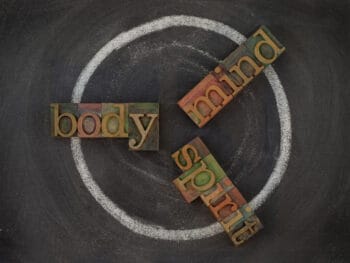Back pain is a common complaint and can happen for various reasons. Science is not certain of the exact recipe to heal back pain. Research on different modes of rehab and training designed to help back- pain sufferers is on-going.
Building a strong and balanced back may be protective. Surprisingly, your consistent attendance in Pilates class along with your chiseled abs and back may not shield you from back pain.
Overall conditioning of your core muscles may safeguard you from future injury. Core muscles refer to a person’s trunk, back, glutes, hips, abductors and abdominal muscles.
Conditioning includes walking with correct posture and balance exercises, along with range of motion and strengthening activities. These components, collectively, factor into protecting your back.
Best Back Practice:
- Walk or regularly engage in some other physical activity.
- Proper postural alignment influences moving with ease.
- Sensory-motor control training may be as important as strengthening or endurance of the trunk muscles when building a strong base.
- Yoga is good practice for strengthening, flexibility and pain management.
- Strengthening the pelvic and trunk muscles plays a role in core stability.
You should consult your primary care provider before starting a new exercise routine, to be sure you are healthy enough to pursue a workout regimen. Once you are cleared for exercise, consider adding the following to your daily routine to build a solid foundation. And remember, if you feel pain– STOP!
Walking:
Walking (with proper form) at a moderate-intense level for as little as six minutes daily may benefit your back. Read on for details on proper posture.
Postural Alignment:
The National Osteoporosis Foundation describes proper standing posture as keeping your head high, chin in and shoulder blades slightly pinched together. Maintain the natural arch of your lower back as you gently contract your abdomen inward, feet are pointed straight ahead with knees facing forward.
Sensory-Motor Control Training (SMC):
SMC is an approach to balance training. Stages of SMC include static, dynamic and functional. Perform your balance exercises at home in a doorway for safety.
Static: Stand on one foot and look straight ahead, progress by closing your eyes or adding head movements.
Dynamic: Add arm and leg movement while standing on one foot. Try to main- tain a steady posture.
Functional: Try balancing on an un- stable surface such as a wobble board, furniture cushion, or sitting on a stability ball.
Be sure to perform the above exercises on each foot, up to 30 seconds, two times throughout the day.
Yoga, Stretching and Strengthening:
Try a beginner yoga class or basic strengthening group session, watch a video or download an app. Experiment with different activities to see what feels good.
References:
http://www.bjjprocs.boneandjoint.org.uk/content/88-B/SUPP_III/449.1
http://www.ncbi.nlm.nih.gov/pubmed/24731894
http://www.ncbi.nlm.nih.gov/pubmed/22850802
Author: Heather Klaus, Medcor, Wellness Program Manager. Heather oversees Medcor’s internal wellness program for nearly 900 associates nationwide. She also develops and supports wellness programs for Medcor clients. Heather is a regular author and contributor to health and wellness blogs, videos and newsletters. Heather holds a Bachelor’s in Science from Northern Illinois University in Nutrition and Dietetics. She is a certified trainer, fitness instructor and Lifestyle and Weight Management Consultant. http://www.medcor.com. Contact: heather.klaus@medcor.com








